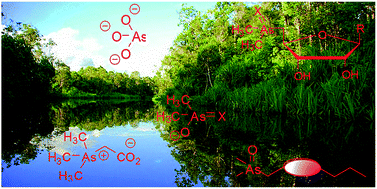Arsenic speciation analysis of environmental samples†
Abstract
Relevant papers in the field of arsenic speciation analysis of environment samples published between 2004 and 2018 have been reviewed, with the focus on the analytical procedures according to the matrix investigated and the species researched. It emerged that suitable analytical methods have been developed for the identification and quantification of about fifty arsenic compounds in the main environmental matrices, including soil, sediments, terrestrial and marine organisms, atmospheric particulate and various types of natural waters. Various extraction/partitioning schemes have been applied, depending on the arsenic species (water- or lipid-soluble) and the matrix (biotic or abiotic), whereas water samples were generally analyzed directly. Liquid chromatography (LC) combined with inductively coupled plasma mass spectrometry was by far the analytical technique of choice, but a significant number of works also applied other couplings (LC to further atomic and mass spectrometry techniques) or X-ray methods. By the application of these procedures, a great amount of information on the occurrence of arsenic in the environment has been obtained, as well as the elucidation of the main processes involved and the discovery of new compounds, like arsenolipids and thio-arsenicals. However, remaining gaps and challenges still exist, both in the fundamental research on the origin and transformation of arsenic compounds in various environmental compartments and in the routine monitoring of toxic arsenic species. It is hence likely that the attempt to address these issues will drive the future research in the field.



 Please wait while we load your content...
Please wait while we load your content...